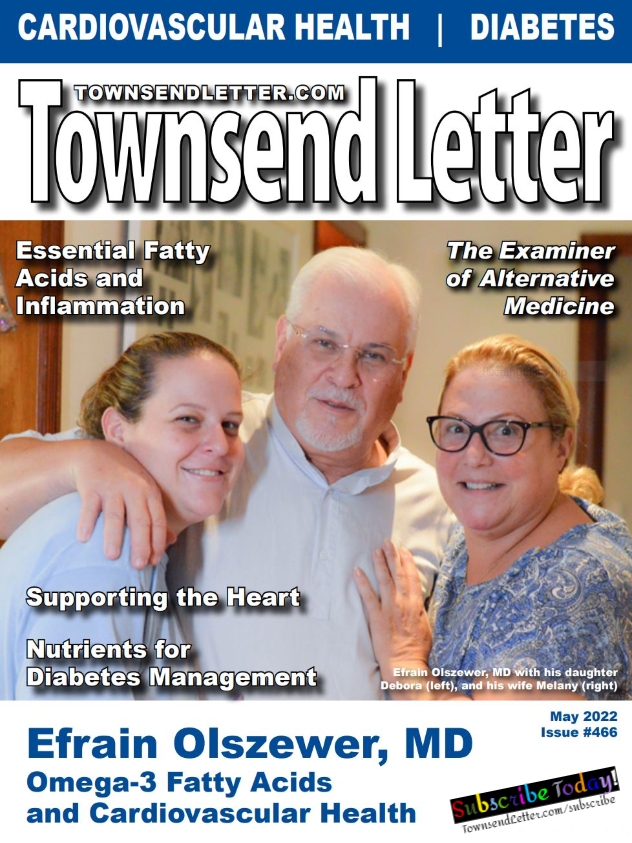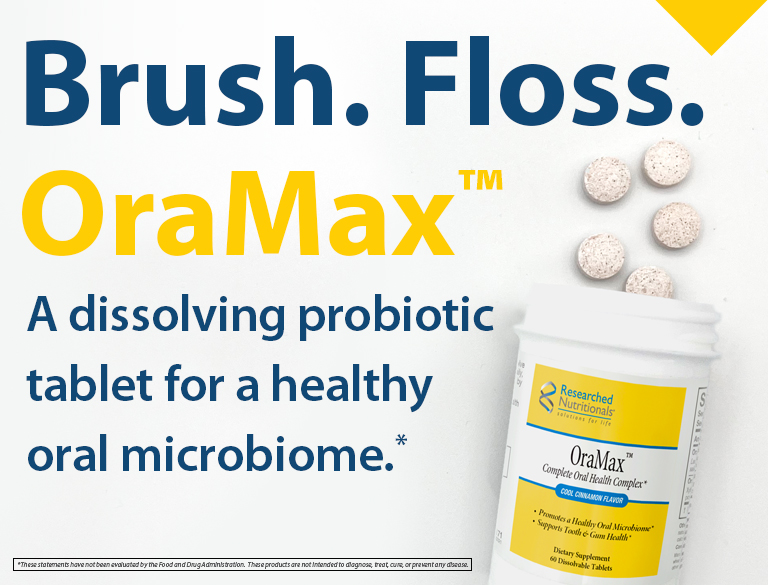CURMUDGEON’S CORNER
by Jacob Schor, ND, FABNO
As naturopathic doctors we rely heavily on epidemiological research to help us steer patients toward health-promoting lifestyle choices. Epidemiology is the study of the distribution and determinants of diseases and other health-related states in specified populations. The word epidemiology comes from three Greek words: “epi”, which means on or upon, “demos,” meaning people, (as in democracy) and “logos,” meaning the study of. Epidemiology is the study of what befalls the people.
In contrast to other scientific disciplines, epidemiology is hampered by the difficulty of setting up experiments to test theories. Ethical considerations prevent scientists from setting up straight forward clinical trials to give people a disease. Epidemiological research is generally limited to careful observation. Without controlled experiments we are left with multiple possible explanations for observed associations. Associations may be due to chance, bias, confounding, reverse causality, and every once in a while, true cause and effect. Proving the later, is anything but simple. Here’s an interesting example.
There is a significant association between how frequently a person laughs and their risk of heart disease and mortality. This data was published April 2020 in the Journal of Epidemiology by Sakurada et al. These authors gathered data on a large Japanese cohort that participated in annual health checkups starting in 2009. At the start, the participants completed a questionnaire that included a question asking how often they laughed out loud (LOL). Over a six-year period adequate data was collected on 17,152 (10,149 females) of these participants. Mean age at recruitment was just less than 63 years old. The participants were divided into three LOL categories: ≥1/week; ≥1/month but <1/week; or <1/month. Data on cardiovascular events and death was compared with LOL frequency using both Kaplan-Meier and Cox proportional hazards modeling.
During the study 257 (1.5%) of the subjects died and 138 (0.8%) had cardiovascular disease (CVD) incidents. Kaplan-Meier analysis showed all-cause mortality to be significantly higher in subjects with a low LOL frequency (log-rank test, P = 0.003). A similar curve was observed for cardiovascular disease incidence (log-rank test, P < 0.001).
Cox-proportional analysis showed similar independent associations between LOL frequency and both all-cause death and cardiovascular disease. In an unadjusted model, all-cause mortality was significantly higher among individuals who laughed <1/month (HR 2.38; 95% CI, 1.42–3.74) than in those who laughed ≥1/ week. After adjusting for age, gender, hypertension, diabetes, smoking status, and alcohol drinking status, risk of all-cause mortality remained significantly higher in subjects who laughed <1/ month than in subjects who laughed ≥1/week (HR 1.95; 95% CI, 1.16–3.09). Risk of cardiovascular disease incidence was significantly higher in subjects who laughed ≥1/month but <1/ week than in subjects who laughed ≥1/week (HR 2.06; 95% CI, 1.38–3.00) in the unadjusted model. After adjusting for the above-mentioned potential confounders, cardiovascular disease incidence was significantly higher in subjects who laughed ≥1/month and <1/week than in subjects who laughed ≥1/week (HR 1.62; 95% CI, 1.07–2.40).1
These are not subtle differences. Frequent LOL was associated with half the risk of disease, or the opposite, infrequent LOL with double the risk. For the sake of comparison, a 10% reduction in cholesterol reduces heart disease incidence by only about 30%.2
This is not the first study to report this inverse association between CVD and laughter frequency. Hayashi et al reported in 2016 that among 20,394 individuals, higher frequency of laughter was associated with significantly lower risk cardiovascular disease and stroke incidence among older Japanese adults.3
We would love this association between LOL and CVD to be one of causation, a simple cause and effect where laughter protects against CVD; invest more effort in making our patients laugh.
Epidemiologists have a mantra that they probably chant when alone in their offices: “Association does not prove causation.” The world is filled with coincidences, and it is no easy task to discern coincidence from cause and effect.
Epidemiologists reference all sorts of statistically significant associations that are merely coincidental. A common example is the correlation between swimming pool drownings and the number of movies that Nicholas Cage appears in each year.4 The more movies, the more drownings. Association does not prove causation. Nor does the fact that the number of suicides by hanging, strangulation, and suffocation in the US per year is closely correlated with the total money spent on science, space, and technology. Per capita cheese consumption is correlated with the number of people who die by becoming entangled in their bed sheets. As I type this article, I’m living in Maine where divorce rates are correlated with per capita margarine consumption. There are enough of these implausible associations that there is a book listing them. Common sense allows us to reject most of them as absurd.5 Yet, I admit, to be on the safe side, we’re not eating any margarine.
Half a century ago, when epidemiologists were trying to establish whether cigarette smoking caused lung cancer, Bradford Hill came up with a list of criteria to help assess whether an observed association was causal. These are now called the Bradford Hill Criteria and include the strength of the association, the consistency in which the association is found, the specificity between exposure and outcome, the temporal sequence (obviously exposure must precede outcome), biological gradient (intensity of exposure should correlate with severity or risk), biological plausibility, coherence with current knowledge, experimental findings (removal of exposure alters disease frequency or severity), and analogy (the relationship is analogous to other cause-effect relationships). These criteria are used as a checklist to evaluate associations, but they don’t always yield the definitive conclusions we want to read.6
This laughter relationship with heart disease may not be as straightforward as we assume. Sakaruda et al report that those who LOL the least frequently are more likely to be male, drinkers, diabetics, with low physical activity, and live without a spouse. Other studies have reported similar associations.7 These are all factors that increase risk of CVD and may reduce the tendency to LOL.
So perhaps this association isn’t true causality but instead reverse causality. Any one of these lifestyle factors might be cause for, or a sign of, depression; and depressed people may have lower frequency of LOL and stop laughing.8 But what causes what is unclear. Those suffering from CVD might simply find fewer things to laugh about.9 Low frequency of laughing may be an indicator of other risk factors for cardiovascular disease; similar to how not using a seatbelt is predictive of other risky driving habits.10
Proving an association does not prove causation, and it is conceivable that those with comorbid disease and impending cardiovascular events might via some still unknown mechanism lose their sense of humor. Infrequent laughter might be a sign of disease rather than an etiology for disease.
We want to believe that laughter acts as an antidote to stress and so lowers CVD risk; there is something attractive about this idea. Norman Cousins’ book title, Laughter Is the Best Medicine, has sunk deep into our collective consciousness. It is easy to accept the idea that laughter could be used as prophylaxis even if we do not have a controlled intervention trial to hold up as proof.
Certainly, this current study is a step in the right direction; it is a large, long-term, prospective cohort that looks at laughter frequency years prior to disease onset. It also takes into account the other major known risk factors for CVD and analyzes them for effect to show that laughter frequency was an independent predictor. Predictor certainly, but cause? It’s probably more complicated.
Li et al suggested in October 2020 that the relationship between cardiac morbidity and depression is genetic in nature, a bi-directional expression of genetic phenotypes. Knowing that depression and CVD are associated with each other, Li’s team determined that the genetic predisposition to depression was causally linked to CVD, myocardial infarction (MI), stroke and atrial fibrillation (AF) by analyzing data from the genome wide association studies (GWAS) and tested for correlation between two depression phenotypes and CVD. They reported that depression phenotypes are genetically correlated with MI and AF. While the connection was there, the effect does not seem huge. Doubling the risk of depression genetically increased risk of cardiac arterial disease (CAD) by about 10% (OR = 1.099; 95% CI 1.031–1.170; p = 0.004) and MI by 15% (OR = 1.146; 95% CI 1.070–1.228; p = 1.05 × 10−4). In other words, those prone to depression are genetically slightly more prone to have heart disease.11 Infrequent laughing might simply be a signal that alerts us to the presence of this genetic phenotype, a sign that risk for both depression and cardiac disease may coexist in a patient. It might not be a cause or a solution. On the other hand, this information might also argue that increasing frequency of laughter could be a way to change phenotypical expression.
Angelman Syndrome, a rare neurologic condition characterized by paroxysmal laughter and ataxic movements, is now understood to be genetic in origin.12 Our tendency or susceptibility toward laughter is clearly controlled to some degree by genetics.
At the same time, we know that laughter can alter genetic expression. Takashi Hayashi and Kazuo Murakami reported in 2009 that laughter improved blood sugar levels in diabetic patients through changing genetic expression. Their research identified specific genes that changed in response to laughter and also, “… revealed that laughter decreased the levels of prorenin in blood; prorenin is involved in the onset of diabetic complications.”13,14 In particular, “… prorenin and the (pro)renin receptor play a pivotal role in the pathophysiology of diabetic nephropathy”15 Could prorenin, which plays a role in regulating the angiotensin pathway, effect cardiac disease risk?
Results from research by Claudia Haase and colleagues published in 2013 suggest that the short allele of 5-HTTLPR polymorphism in the serotonin transporter gene has a significant impact on emotional expression, increasing the likelihood a person will laugh out loud.16 Short 5-HTTLPR alleles also appear to increase the amount of influence environmental factors have on emotional development and on behavior.17 This gene is associated with post stroke depression18,19 and depression associated with coronary artery disease.20 These relationships between depression and heart disease also appear to be bi-directional.21
Several aspects reported by Sakaruda et al point out differences between American and Japanese culture. Japanese men don’t seem to laugh very much. Almost 2/3 of the men in their cohort reported laughing out loud less than once a month. That itself seems depressing.
A February 2020 study by Ikeda et al correlated laughter frequency with blood pressure, also conducted in Japan, reported that men who laughed infrequently (1- 3 times per month) had significantly higher systolic and diastolic blood pressure than those who laughed more often. In women, blood pressure did not vary with laughter frequency. In this Ikeda group, only 13% of the (72/554) male participants fell into the infrequent laugher category.22
Another peculiar thing reported in the Sakurada results is that the association between laughter, CVD, and mortality was only significant in women. When data from men and women were combined, the associations were significant, but when data from men were separated out, the association disappeared. This stands in contrast to the Ikeda results related to blood pressure where laughter improved blood pressure in men but not women.
Practice Implications
We should certainly pay attention to how often our patients laugh. Such knowledge can be a clue to their risk for both cardiovascular disease and overall mortality. A simple question on the intake form, as Sakurada’s group used, appears to be adequate, but perhaps, paying attention when sitting with the patient will work even better. Do they laugh or not? This information may tell us something about their risk for disease.
Although Sakurada et al write that their “…findings suggest that increasing the frequency of laughter might reduce the risk of cardiovascular disease and increase longevity,” it may be premature to call this ‘evidence based’ medicine. We hope that this association proves to be causal but until a prospective intervention confirms making people laugh lowers their risk of becoming heart disease patients, uncertainty remains.
Should we be encouraging our patients with CVD to laugh more? I believe so. Much of what we do in naturopathic medicine is informed by epidemiological associations that lack experimental proof of causality. In situations like this LOL and CVD data, we have no reason to believe that an intervention suggested by falsely assuming the relationship is causal will lead to harm. It might help. The patient’s depression and heart disease may be genetic to some degree, but laughter has the potential to alter genetic expression, so why not give it a try? As happens so often when trying to use epidemiology to guide our way, we are left with our naturopathic refrain: “It can’t hurt but might help so, what do we have to lose?”
1. Sakurada K, et al. Associations of Frequency of Laughter With Risk of All-Cause Mortality and Cardiovascular Disease Incidence in a General Population: Findings From the Yamagata Study. J Epidemiol. 2020 Apr 5;30(4):188-193.
2. https://www.cdc.gov/dhdsp/data_statistics/fact_sheets/fs_state_cholesterol.htm
Cohen JD. A Population-based approach to cholesterol control. Am J Med 1997;102:23–5.
3. Hayashi K, et al. Laughter is the best medicine? A cross-sectional study of cardio- vascular disease among older Japanese adults. J Epidemiol. 2016; 26:546–552.
5. These examples are from the website tylervigen.com and the book Spurious Correlations by Tyler Vigen.
6. Rothman KJ. Epidemiology: An Introduction (2nd edition). Oxford University Press, 2012.
7. Imai Y, et al. Impact of social relationships on income-laughter relationships among older people: the JAGES cross-sectional study. BMJ Open. 2018;8: e019104.
8. Hare DL, et al. Depression and cardiovascular disease: a clinical review. Eur Heart J. 2014 Jun 1;35(21):1365-72.
9. Hare DL, et al. Depression and cardiovascular disease: a clinical review. Eur Heart J. 2014 Jun 1;35(21):1365-72
10. Kizer KW, Trent RB. Safety belts and public health. The role of medical practitioners. West J Med. 1991 Mar;154(3):303-6.
11. Li GH, et al. Evaluation of bi-directional causal association between depression and cardiovascular diseases: a Mendelian randomization study. Psychol Med. 2020 Oct 9:1-12.
12. Bonello D, Camilleri F, Calleja-Agius J. Angelman Syndrome: Identification and Management. Neonatal Netw. 2017 May 1;36(3):142-151.
13. Hayashi T, Murakami K. The effects of laughter on post-prandial glucose levels and gene expression in type 2 diabetic patients. Life Sci. 2009 Jul 31;85(5-6):185-7.
14. Hayashi T, et al. Laughter modulates prorenin receptor gene expression in patients with type 2 diabetes. J Psychosom Res. 2007 Jun;62(6):703-6.
15. Ichihara A, et al. Activated prorenin as a therapeutic target for diabetic nephropathy. Diabetes Res Clin Pract. 2008 Nov 13;82 Suppl 1:S63-6.
16. Haase CM, Saslow LR, Bloch L, Saturn SR, Casey JJ, Seider BH, Lane J, Coppola G, Levenson RW. The 5-HTTLPR polymorphism in the serotonin transporter gene moderates the association between emotional behavior and changes in marital satisfaction over time. Emotion. 2013 Dec;13(6):1068-79.
17. Sawano E, et al. Interactive effects of 5-HTTLPR genotype and rearing environment on affective attitude towards own infant in Japanese mothers. Behav Brain Res. 2017 May 15;325(Pt B):173-180.
18. Guo WY, et al. Relationship between 5-HTTLPR polymorphism and post-stroke depression. Genet Mol Res. 2016 Feb 19;15(1).
19. Mak KK, et al. Polymorphisms of the serotonin transporter gene and post-stroke depression: a meta-analysis. J Neurol Neurosurg Psychiatry. 2013 Mar;84(3):322-8.
20. Golimbet VE, et al. [The role of the 5-HTTLPR polymorphism of the serotonin transporter gene in the development of depression in patients with coronary heart disease]. Zh Nevrol Psikhiatr Im S S Korsakova. 2012;112(8):63-9. Russian. PMID: 23096047.
21. Wium-Andersen MK, et al. An attempt to explain the bidirectional association between ischaemic heart disease, stroke and depression: a cohort and meta-analytic approach. Br J Psychiatry. 2020 Aug;217(2):434-441.
22. Ikeda S, et al. Longitudinal Trends in Blood Pressure Associated with the Frequency of Laughter: Longitudinal Study of Japanese General Population: the Circulatory Risk in Communities Study (CIRCS). J Epidemiol. 2020 Feb 22.












